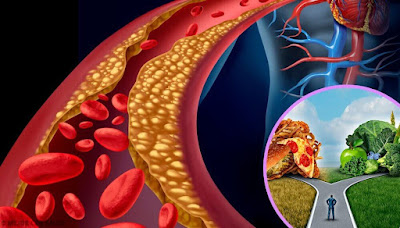Cholesterol is a natural substance in the body that supports cell membranes, hormone levels and more. But having too much of this fatty substance in the blood can be dangerous to your health.
High cholesterol can be caused by a variety of things, including diet, being overweight, smoking and drinking too much alcohol. You can reduce your risk of developing high cholesterol by changing the way you eat and exercising.
Chest Pains
Chest pain is a common symptom of many heart problems. It's not necessarily a sign of a heart attack or stroke, but it should be checked out as soon as possible by your doctor.
The most common chest pain, known as angina, is caused by a blockage in the coronary arteries that supply blood to your heart. This can happen when a buildup of cholesterol clogs the arteries and reduces blood flow.
This can cause chest pain that spreads to your left arm, neck, jaw and back.
If the pain gets worse when you exercise or breathe deeply, it's a good idea to see your doctor.
Several conditions can also cause chest pain in children, including pneumonia (lung infection) and asthma. Your pediatrician will need to examine your child to determine the cause of their symptoms.
Leg Pains
High cholesterol can cause a number of problems for your body including leg pains. People with high cholesterol often experience a condition called peripheral artery disease, which affects blood circulation to the legs.
Peripheral artery disease, also known as PAD, is caused by a build-up of fatty plaque in the arteries that carry blood to the arms and legs. This can narrow or block the arteries, which can injure nerves and other tissues.
Some of the symptoms associated with PAD include leg pain, numbness and cold legs or feet. These symptoms can happen in any part of the leg and can feel worse when you stand or sit for long periods of time.
Claudication is another common cholesterol kam karne ki desi dawa and occurs when blood flow to muscles is reduced during exercise, especially walking. This type of pain usually ends as soon as you stop activity.
Heart Problems
High cholesterol is a risk factor for heart problems, especially coronary artery disease (CAD) and strokes. These diseases occur when your arteries get narrowed by the buildup of plaque in them, or by plaque that breaks off and floats to other blood vessels, blocking them.
Arteries are the blood vessels that carry oxygen and nutrients to your body. If these arteries become narrowed or blocked, they can stop blood from flowing properly to parts of your heart or brain.
If this happens, you may experience chest pain or other symptoms such as shortness of breath, fatigue and swelling in the legs.
You can lower your cholesterol with a healthy diet, regular exercise and sometimes medication. If you have high cholesterol, it’s important to start treatment early. It’s also a good idea to get your cholesterol checked regularly starting at a young age.
Weight Gain
High cholesterol is a condition that increases your risk of heart disease. It usually doesn’t cause any symptoms, but high levels can lead to fatty deposits that build up in your arteries (atherosclerosis).
Overweight or obese people are more likely to have high cholesterol than thinner people. Heredity can also play a role.
Getting enough exercise is key to controlling cholesterol. It helps lower your LDL cholesterol and raises HDL.
Eating a healthy diet and quitting smoking can also help. These changes reduce your cholesterol and help you manage your weight.
A healthy diet includes fruits, vegetables, low-fat dairy products and lean meats. It’s also important to avoid saturated and castrol ka desi ilaj. These are found in some meats, dairy products and fried or processed foods.





No comments:
Post a Comment